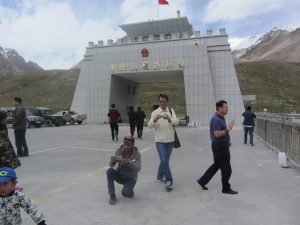This article is part of a special series on the New Development Bank in advance of the 9th BRICS Summit in Xiamen, China from September 3-5. To read more about the NDB’s lending standards, its attentiveness to concerns about social and environmental impacts of projects, and the bank’s future strategy, download our report.
The New Development Bank (NDB) is planning to approve more than 15 projects totaling US$3 billion in 2017.
The multilateral development bank was founded by the BRICS countries (Brazil, Russia, India, China and South Africa) in 2015. The forthcoming projects are in sectors including renewable energy, sustainable transport, water treatment, and urban development, according to Leslie Maasdorp, vice president and chief financial officer of the New Development Bank.
According to the bank’s Five-Year General Strategy, around two-thirds of all its financing commitments in the coming five years will go to sustainable infrastructure development. Within its existing project portfolio, six out of seven projects are in the renewable energy sector. Last year, the NDB also completed its first green bond sales in China, worth three billion yuan (US$448 million), making it the first multilateral financial institution to issue green bonds in mainland China.
However, the bank has also faced scrutiny over whether it will continue its current investment practices; whether its existing policies to safeguard the environment and social justice are sufficiently robust; and why it still has no detailed strategy for its investment in the energy sector, which has been the centrepiece of its portfolio so far.
We sat down with the NDB vice president at the bank’s Shanghai headquarters to learn more about how it plans to pursue green financing and intends to add value to the abundance of multilateral financial institutions. The interview has been edited for clarity.
What does “new development” mean for the New Development Bank?
Each of our five countries, led by China in the sense that China is the second largest economy in the world, face huge environmental challenges, which come from a particular pattern of the economic growth over the last 30 years.
Probably the best example of dynamic economic growth in the world over the last 30 years has been China, but that has taken place against the backdrop of significant damage to the environment and public health.
What you have today are huge challenges with respect to the quality of air, the quality of water, and the environment in general. So the bank is hoping to contribute to the green development of our member countries, and the focus on renewable energy is central to each of our member countries.
The fact that the bank has done almost 100% of its first five projects in renewable energy is a reflection of the priority that our member countries are placing on the environment, on reducing the carbon footprint in their countries, on helping their economies transition toward a less carbon-intensive growth path.
What is the NDB’s added value in the growing cluster of old and new multi-lateral development banks?
First, I would say is our focus on sustainability, which I already highlighted. This is in line with many of the development banks but in our case sustainable development is enshrined in our Articles of Agreement.
Our second differentiator is we would like to explore the extent to which we can raise local currency funding and then “on-lend” local currency for our respective member countries. So what does that mean? In the case of China, instead of only providing US dollar loans to [also] provide loans in renminbi.
The third area that sets us apart is what we call “country systems”. It’s very important that we respect the unique institutional form of each of our member countries. We don’t come to China and impose standards that have been developed globally as best practices and say they’ve got to have these standards around resettlement of people, or water quality or pollution. Each country has very unique characteristics.
So I would say sustainability, local currency funding, and country systems would be three of the core areas.
Fourthly, we want to, as an institution, be innovative in our business model, open to new ideas, agile, and without a fixed set of products that we propose. So that openness to new ideas and openness to innovation will allow us to partner with other institutions.
What if the country system is deemed insufficient to ensure that the NDB’s environmental and social standards are protected?
When I give talks these days I often ask people by show of hands who thinks China’s environmental standards are low? And most people say that the standards are low. And that is again a misperception. The reason why we have much higher levels of pollution, for example in this country, is not because China has low standards. It’s that standards are not always enforced. So we want to ensure local standards are enforced.
We also have NDB policies on environmental, social and labour standards, and we want the principles of those standards to be adhered to. So if there is a divergence, NDB still has a fallback – a minimum set of conditions around procurement, labour standards and resettlement of communities.
We will not enter into a situation where countries have no standards at all.
How does the NDB ensure its green bonds are “green”? And where does the NDB stand when it comes to funding fossil fuel-related projects?
So the green bond standards are quite broad. But the People’s Bank of China (PBoC) guidelines are clearer in this regard. For example, bond issuers must have an audit process or an audit trail. When you study those guidelines (issued on the 22 December 2015), you will see that PBoC recognises different shades of green.
In terms of our projects, the features of these are all published on our websites. You will be able to see that all of them are substantially green. The renewable energy projects have no links to the traditional energy system.
In the future, I’m sure there will be projects where ambiguity might come in. For example, there are ways in which one can do clean coal, so you can do a coal-fired power station, but you can do it in such a manner that you apply the latest technologies to reduce the emissions footprint. We have not entered that space yet. At the moment our projects are thankfully pure green in that respect.
I’m sure there will be projects where
ambiguity might come in
Will the NDB release a complete energy strategy paper in the future?
Our focus is around sustainable infrastructure. We will have, by the end of this year, 150 professionals working in the bank. It will grow to 240 in the next year. Part of this growth will entail us developing focused internal sectorial expertise in environmental areas, such as water and sustainable transport. It will also involve developing focused policies in each of those areas over the next 18 months to two years. So at this stage we do not have a focused energy policy, but it is part of the future design of the institution.



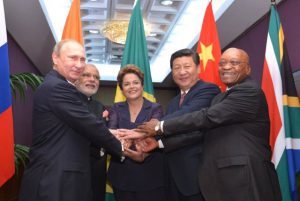
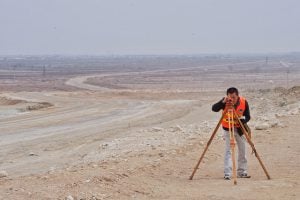
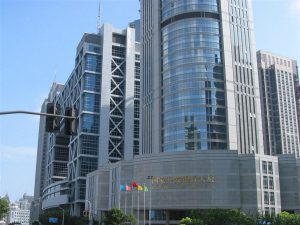
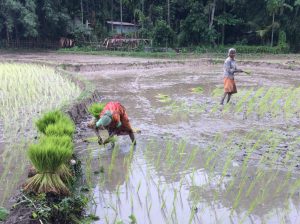

![A woman pumps up water from a tubewell in West Bengal despite the red cross that signifies that there is an unacceptable level of arsenic in the water [image by Dilip Banerjee]](https://dialogue.earth/content/uploads/2017/09/Woman-at-tubewell-West-Bengal-Image-by-Dilip-Banerjee-1-300x206.jpg)
